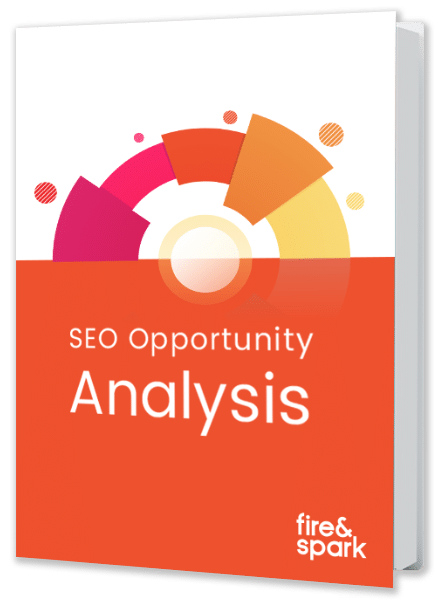Bounce rate is an important metric for understanding customer behavior when visiting your eCommerce website because it measures the effectiveness of your pages. Customers who bounce don’t buy.
The key to lowering bounce rates for all types of ecommerce pages (i.e. product pages, collection pages, blog, etc) is to align your content with your customers’ search intent. You must develop a detailed understanding of your customers’ buying process and the questions they need answered to make their buying decisions.
This level of customer intimacy allows you to optimize your product, collection, and article pages to align with your customers’ needs, lower bounce rates, and increase sales.
What Is Bounce Rate?
Bounce rate is the percentage of people who visit your site, don’t perform any actions, and and leave after viewing only one page. This metric measures how visitors interact with your website and can let you know how engaging your content is. On the business side of things, bounce rate is important to pay attention to because the more pages a visitor engages with – the more likely they are to convert.
How Is Bounce Rate Calculated?
Bounce rate is calculated by dividing the number of sessions in which a user only visited one page of a site by the total number of sessions. For example, if 20 out of 100 visitors to a landing page leave without visiting any other pages on your website, your bounce rate would be 20%.
What Is A Good Bounce Rate For eCommerce Sites?
For eCommerce sites, organic traffic landing on product-related pages from search engines has an average bounce rate of 40-50%. However, the ideal bounce rate varies based on the purpose of the page visitors are viewing, as well as the source of the traffic.
Ecommerce brands with a purpose often have educational or other not product-focused content. For these pages, the bounce rate from organic traffic will often be higher. The average range can span from 50-70%.
Why Is Bounce Rate Important To Measure?
Bounce rate is an important metric because it shows whether your content is engaging visitors well enough to keep them on the site. It is easy to understand that if a visitor finds what they were looking for in your site, they will not bounce. However, if your content lacks the information they need, they’ll move on and find a website that does have it.
Improving your site’s bounce rates will better guarantee more people stay on your site rather than going back to SERPs—a factor that can certainly affect SEO.
If a page has a low organic bounce rate, you can assume that something within it’s content is compelling visitors to dive deeper into the site. Unfortunately, high bounce rates are not always easy to diagnose. There are a multitude of factors that can cause an elevated bounce rate.

What Causes High Bounce Rates?
Multiple factors can impact bounce rate, including:
- Page Type vs. Search Intent – A page may not fulfill a user’s needs or address their original search query. On the other hand, it may successfully cover the exact information a visitor is searching for.
- User Experience – A page that is slow to load may result in impatient visitors leaving early. Additionally, a page that’s difficult to navigate or has obnoxious pop-ups or CTAs may drive users away.
- Site Design – A poorly designed site or one not optimized for mobile devices can quickly turn visitors away.
- Technical Issues – If your page isn’t loading properly or producing a 404 error page, visitors will likely leave to find the next working page on SERPs.
- Bad Links – If a referring site incorrectly linked your page or inappropriately linked it in their copy, then visitors from that site may bounce.
- Level of Engagement – A page may or may not have engaging content to keep visitors interested.
- Page Purpose – Different types of pages can lend to different bounce rates. For example, a landing page is expected to have a much higher bounce rate than a product page or blog.
- Inaccurate Meta Tags – If your meta title tags and description do not accurately describe the content on your page, users visiting your site because of this description may quickly leave once they realize your content isn’t what they’re looking for.
Misalignment between search intent and page intent is the first cause you should consider when diagnosing your site’s high bounce rate.
Before jumping to any technical fixes or redesigns, make sure your targeted keywords align with your content. Most of the time, misalignment between search intent and page type (i.e. product pages, collection pages, blog, etc) will significantly contribute to an abnormally high bounce rate.
Search Intent Drives Bounce Rate
Search intent is essentially the consumer’s goal when using a search engine. Google’s AI-based algorithm is continually getting better at asking and answering the question of “what is the searcher really looking for?” for any specific search query. Because of this, Google is delivering better and more aligned results to what the searcher wants.
In 2015, Google announced an addition to its algorithm they called RankBrain. This innovation relies on machine learning techniques to interpret the intent behind a search query and surface the best content.
Early versions of Google’s algorithm would simply look for pages that mentioned the words the searcher typed into the search box. Back then, if you searched for “avocado oil” you might see a news article about an avocado farm or a diary entry written by an aspiring avocado farmer.

Today, Google is adept at satisfying the intent behind the search. For example, Google knows that someone searching for “avocado oil” is likely looking to purchase a product, find recipes or read nutrition information. For competitive keywords, Google will find the best pages to satisfy the queries regardless of the technical optimizations deployed to promote organic visibility.
Brands must research the intent behind keywords to develop content that matches the query and improve bounce rates. For product-related queries, Google understands when the intent is to seek information versus buy a product. For informational keywords, scant product details on an ecommerce product page are not enough to satisfy the query.
There are four main categories of search intent:
- Informational – Searchers are looking for information about a specific topic.
- Navigational – Searchers want to visit a specific website.
- Commercial – Searchers are planning to purchase products.
- Transactional – Searchers want—and are ready—to purchase products.
Aligning your content to the search intent for the keywords your target audience is using is important for lowering bounce rates. Choose the right type of page to target for each keyword based on the keyword’s search intent. If a searcher is looking for information you do not want them landing on a product page. Conversely, if a searcher is using a high purchase intent search keyword, you do not want to show them an article about your brand mission.
How to Identify Search Intent
Below is a table of brief, general guidelines to follow when it comes to aligning keywords and their modifiers with page and search intent:
| Page Type | Search Intent | Product Pages |
|---|---|---|
| Product Pages | Transactional, Commercial | Buy, deal, discount, [product name]… |
| Collection Pages | Transactional, Commercial | Buy, deal, discount, [product name]… |
| Homepage | Navigational | [brand name], [product name] |
| Blog Pages* | Informational | Information, guide, how to, why, Q&A, best way to… |
| why, Q&A, best way to… |
*With blog pages, in particular, you’ll not only want to ensure you include keywords that match user intent but also other related keywords for a specific topic. Check out a keyword’s SERPs under the “People also ask…” or “Related searches” sections to get an idea of relevant keywords you could target in your blog’s content.
It’s worth noting that even if search intent is clear based on the keywords you research, you should look at other pages that rank for those terms to double-check. In some cases, a user may search for keywords with different types of intent.

Get Your Bounce Rate Where You Want It
Bounce rate is a key metric in SEO. Content—primarily informational or educational content—is such a vital part of marketing strategies for many mission-driven brands; making sure that content is optimized to align with searchers’ intent is essential.
Following this strategy will help you create content people actually want to see and attract customers who truly care about your products or services.
To learn more about Search Intent and how it impacts your Conversion Rate and SEO, check out our E-commerce Marketing Summit from January, where Fire&Spark President, Dale Bertrand, explains the topic. Click here to watch.
 Avoid the hassle of researching keywords and identifying which ones match your search intent. Check out Fire&Sparks eCommerce services and let us do the hard work for you.
Avoid the hassle of researching keywords and identifying which ones match your search intent. Check out Fire&Sparks eCommerce services and let us do the hard work for you.
Not an eCommerce site? Get a free custom SEO opportunity analysis for your business in your industry.

